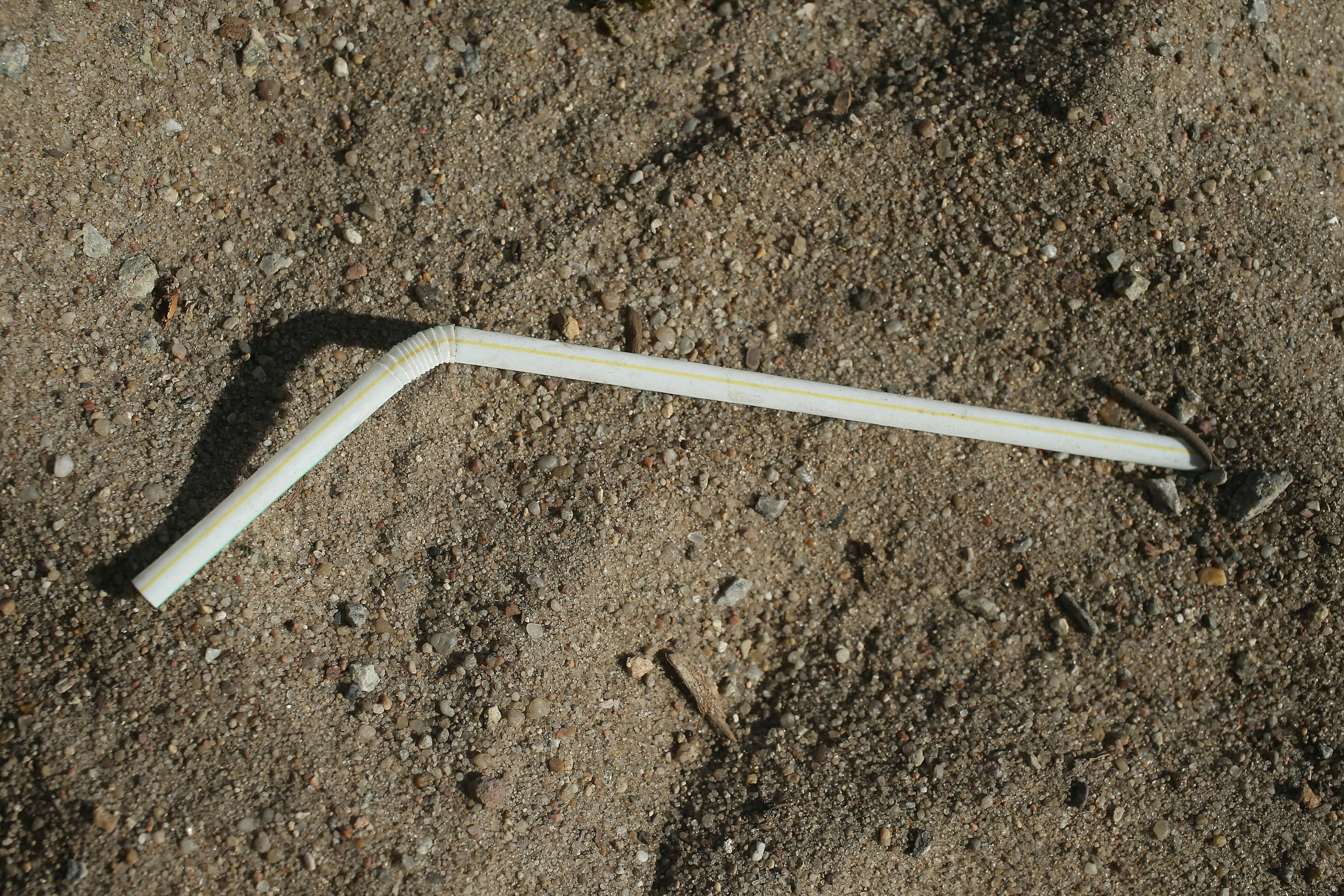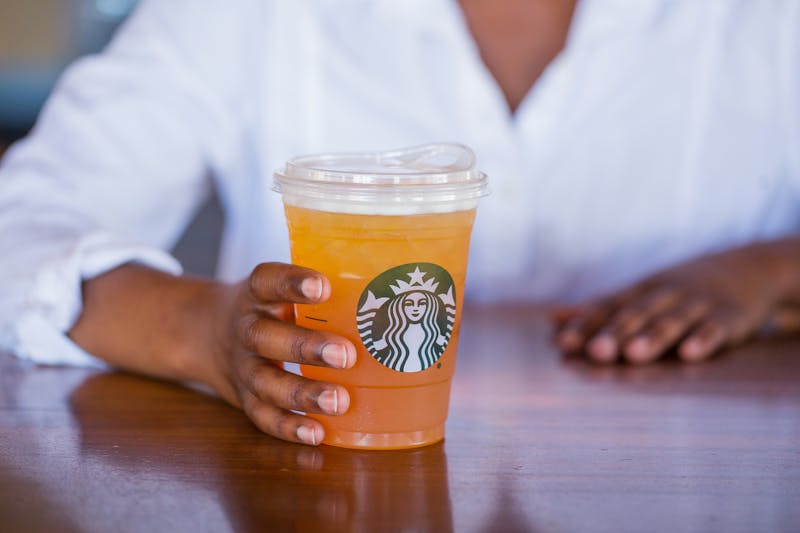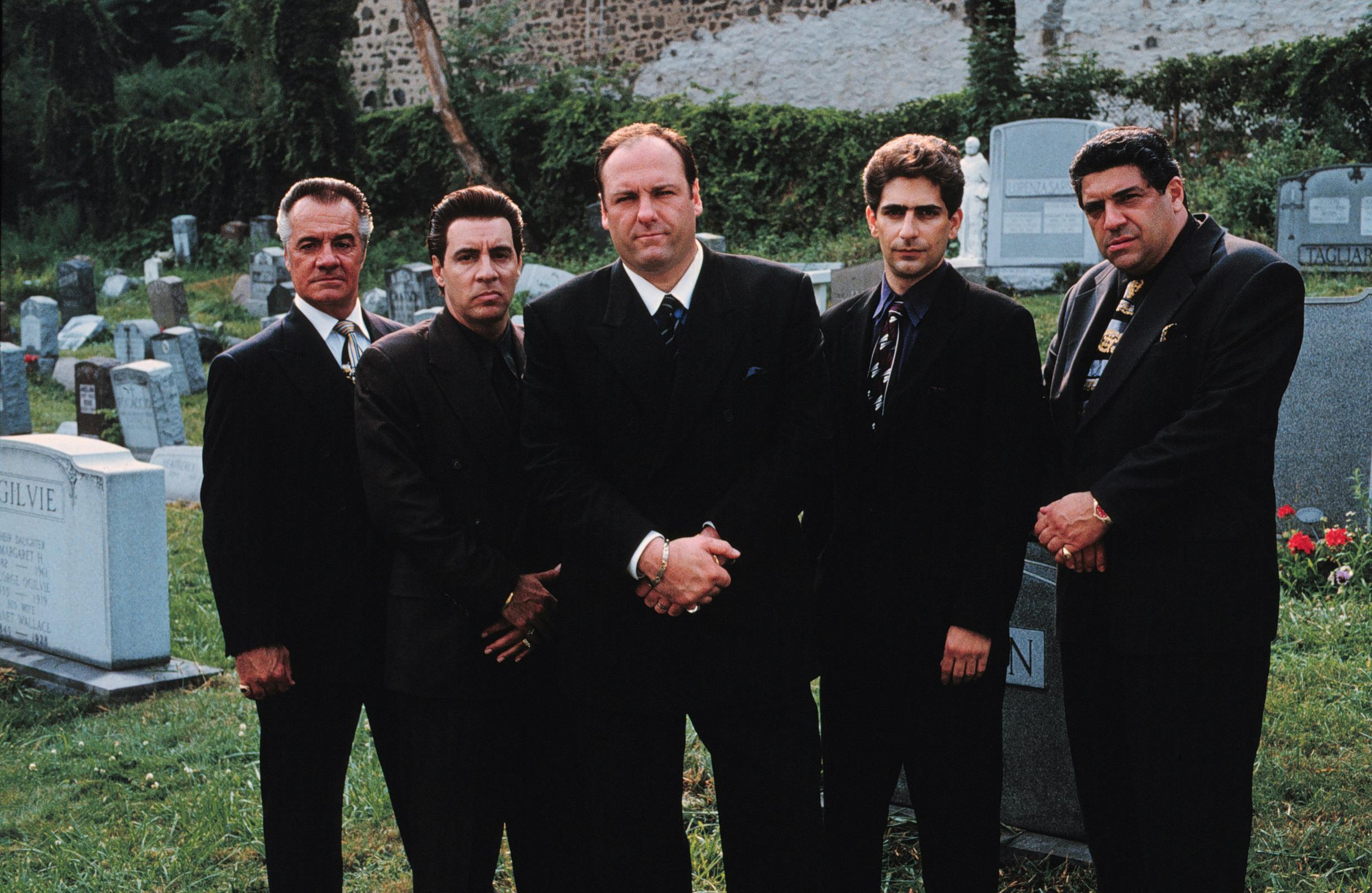
To have an honest conversation about the ocean plastics crisis, one must accept two hard truths. The first is that the situation is dire: Every year, more than 8 million metric tons of plastic waste gets lost at sea, where it breaks down into microplastics that kill marine life. The second is that solving the problem will be very difficult. We could get rid of all the plastic straws in the world, and we still wouldn’t be anywhere near out of the woods.
That latter point is why some have scoffed at Starbucks’s Monday announcement that it will phase out plastic straws in its 28,000 stores around the world by 2020. Within a year and and a half, the company said, its plastic straws would be replaced with sippy cup-like lids—which, yes, will also be made of plastic. The drinks that currently come with straws, like iced coffees and frappuccinos, will still be served in plastic cups. “So what are we celebrating exactly?” tweeted science journalist Erin Biba. “Putting a bandaid on a gaping wound and patting ourselves on the back.”
Supporters of Starbucks’s plan acknowledge it’s not a perfect solution. “Clearly we need more and bigger commitments from companies that are literally handing us tons of plastics every day,” said Jacqueline Savitz, the chief policy officer at environmental non-profit Oceana. But you have to start somewhere, she said. Why not do so with a product that most people don’t actually need? (Some disabled people may need straws, but Starbucks said it will still have paper straws and biodegradable plastic straws on hand if people request them.)
Straw phase-outs aren’t totally insignificant when it comes to reducing pollution. Along with plastic stirrers, single-use plastic straws make up 7 percent of all plastic trash in the environment (land and sea), and about 4 percent of all ocean plastics. “We find them prominently during big beach cleanups,” said Jackie Nuñez, founder of The Last Plastic Straw. “And even though they’re a small percentage of what’s in the ocean, they’re still in the ocean doing harm.” Consider the sea turtle in the 2015 viral video that catalyzed the anti-straw movement: It hisses and gasps as marine biologists spend eight excruciating minutes prying a straw from its bloody nostril.
It’s true that Starbucks alone can’t make much of dent. The company says its move will eliminate about one billion plastic straws per year, whereas Americans probably use tens if not hundreds of million straws per day. (Reliable estimates are hard to come by.) A bigger dent could be made if other food and beverage chains followed Starbucks’ lead. McDonald’s, for example, uses an estimated 36 billion straws every year, according to the consumer advocacy group SumOfUs. That company has taken a small step in Starbucks’ direction, by replacing plastic straws with paper straws in about 1,300 restaurants in the United Kingdom and Ireland. But those plans were spurred by government regulations banning single-use plastics. In places without such laws, McDonald’s isn’t expected to phase out straws anytime soon. “There isn’t currently a viable alternative that’s nonplastic at the moment, at the scale we need,” the company’s CEO said.
 Starbucks says its new strawless lid “is made from polypropylene, a commonly-accepted recyclable plastic that can be captured in recycling infrastructure.”Starbucks
Starbucks says its new strawless lid “is made from polypropylene, a commonly-accepted recyclable plastic that can be captured in recycling infrastructure.”StarbucksThe fact that Starbucks is replacing its plastic straws with denser plastic lids has also spurred concerns that the company is still using roughly same amount of plastic in its packaging, if not more. But Starbucks has argued that its new lids will be much easier to recycle than plastic straws. “By nature, the straw isn’t recyclable and the lid is, so we feel this decision is more sustainable and more socially responsible,” Starbucks’ director of packaging sourcing said in a statement. As Sam Athey, a plastics pollution researcher, explained to the The New York Times, “Plastic straws are pretty small and lightweight, so when they’re going through the mechanical sorter, they’re often lost or diverted.” And once straws slip through the cracks and get into the environment, it takes about 200 years for them to break down. “The straw was never recyclable,” Nuñez said. “The significance of the lid is that now you’ve got one item instead of two, formed in a shape that could potentially be recycled.”
The key word is “potentially”: Most recyclable plastic is never actually recycled. “The global recycling rate is less than 10 percent for plastic,” said Julie Andersen, the global executive director of Plastic Oceans Foundation. And the biggest flows of plastic into the oceans are coming not from America, but Southeast Asia and India, where cities don’t have robust trash and recycling systems. That’s why many ocean cleanup advocates say inadequate waste management, not the widespread use of plastic, is the biggest obstacle to preventing ocean plastic pollution.
But advocates also say companies like Starbucks share a responsibility, with governments, to improve recycling practices around the world. “All industries should be accountable for the plastic waste they create,” Andersen said. In Germany, for example, a whopping 65 percent of waste is recycled—and that’s partially because companies that sell plastic products must pay into the recycling system for the amount of plastic they put out. “As soon as [Germany] did that, the industry came up with ways to reduce the plastic they were producing,” Andersen said. “Personally,” she added, “I’ve never been to a Starbucks where they have a big recycling bin.” (Starbucks reportedly has front-of-store recycling in 50 percent of its company-owned stores.)
But changing laws, and encouraging corporate responsibility, require public buy-in. That, advocates say, is the real benefit of plastic straw bans. “I picked straws as my focus because it’s really a simple, tangible thing—but also the symbol of our bigger problem, this disposable culture,” Nuñez said. “What’s most important is that now, everyone is talking about plastic. And the straw is the key that opens the room.”

It’s only been a month since AT&T’s merger with Time Warner was allowed by a federal judge, in a decision that will have deep and lasting implications for the future of American economic and cultural life. The merger can already be felt in the form of higher prices, while its long-term legacy will likely include increased consolidation—and monopolization—in the telecommunications and media industries. An early loser in the merger appears to be HBO, which was acquired by AT&T a month ago, and is already feeling pressure from executives to overhaul its model in pursuit of greater profits.
As soon as the merger was approved in mid-June, reports emerged that HBO and AT&T were heading toward a culture clash. “HBO’s and AT&T’s cultures also come from a very different financial perspective,” communications expert Gary Arlen told The New York Times. “AT&T comes from a legacy of rate regulations, and every expense has to be justified.” HBO, in contrast, bet big on quality, resulting in a string of successes dating back more than two decades.
At a town hall meeting in mid-June, audio of which was leaked to the Times, newly installed executive John Stankey told employees: “It’s going to be a tough year. It’s going to be a lot of work to alter and change direction a little bit.” He added, “You will work very hard, and this next year will—my wife hates it when I say this—feel like childbirth.” In Stankey’s mind, HBO is lagging behind in the streaming era and needs to attract more subscribers and keep them watching HBO programming. The goal is apparently to turn the company into a competitor to Netflix, Amazon Prime, and Disney’s streaming service, which is set to launch some time next year.
There are certainly reasons for HBO’s 30 million-plus subscribers to be concerned. Turning HBO into Netflix is reflective of the growing desperation of entrenched cable powers in the streaming era. AT&T is so eager to find a competitor for Netflix that it’s willing to compromise one of its most valuable assets in the process.
HBO has been the most important and consistent television network of the millennium. With hits ranging from Game of Thrones to Girls to The Sopranos to Westworld to Six Feet Under, the network has led all networks at the Emmys for 16 straight years. While no network has been immune to cord-cutting, HBO has shielded itself by producing Game of Thrones, one of the most popular shows in history, and by building a viable product aimed at cord-cutters, HBO Now, that currently boasts five million subscribers.
But even for a network as successful as HBO, Netflix looms large. Five million subscribers is nothing to sneeze at, but Netflix has 125 million subscribers. It has plans to produce 700 original series in 2018 and could spend up to $13 billion on content production. Over the last decade, since it transitioned from a mail company to a content provider, Netflix has already snatched one of HBO’s crowns—its dominance in stand-up comedy—and threatened its supremacy in post-theatrical release movies. Given its investment in original content, it is likely that HBO’s Emmy reign will come to an end sooner rather than later.
There are crucial differences between HBO, Netflix, and what Disney is building, however. HBO is still a cable network that needs programming to fill 24 hours a day, seven times a week. About 70 percent of what is watched on HBO isn’t original programming, but Hollywood movies. It creates shows, many of which are ambitious and highbrow, but that are designed to attract audiences that keep coming back.
Netflix has more in common with Time Warner than it does with HBO, producing hundreds of shows that are aimed at scratching every possible itch. Disney, meanwhile, is basing its streaming platform on its intellectual property—not just the Disney universe, but Star Wars and Marvel as well. It is betting that it can acquire millions of subscribers by giving them Avengers or Rogue Squadron content that they won’t be able to view anywhere else.
HBO’s plan to release at least one—and possibly up to five—Game of Thrones spin-offs gives it a certain advantage. In terms of original content, it has a reputation for quality and innovation, and it has room to grow. HBO spent about $2.5 billion last year making television, a figure that includes Game of Thrones’s budget-busting production. That’s nearly $10 billion less than Netflix. HBO has bet on its culture and its reputation again and again and has come out on top.
But Stankey wants HBO to find ways to bleed loyal customers, attract new ones, and ramp up its content production. And it would do this ostensibly without sacrificing the brand it has built over the past three decades. “You get more data and information about a customer that then allows you to do things like monetize through alternate models of advertising as well as subscriptions, which I think is very important to play in tomorrow’s world,” Stankey told HBO employees. He told them he wants viewers to watch “hours a day” instead of “hours a week.” He didn’t tell them how much money AT&T planned on investing in HBO, just that he expected the network to be more profitable.
This could be a recipe for disaster. AT&T is saying that it doesn’t want HBO to change its identity, while demanding that it become a Netflix competitor, “monetize” through advertising, and capture its audience on an hourly basis—all without a guaranteed investment from its new minders. Since its inception, HBO’s motto has been, “It’s not TV, it’s HBO.” AT&T still doesn’t want HBO to be TV—but it does want it to be Netflix.

 Because shopping for bargains on new computer hardware can be a considerably time consuming endeavor, we regularly compile a list of the best deals.
Because shopping for bargains on new computer hardware can be a considerably time consuming endeavor, we regularly compile a list of the best deals.
No comments :
Post a Comment